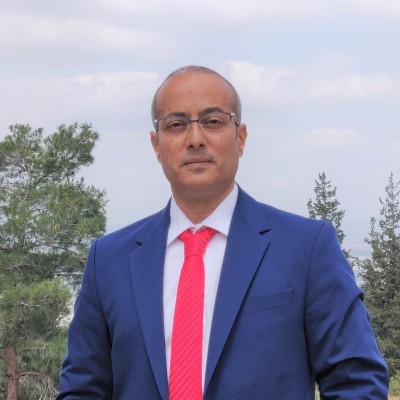Video Transcription

Dr. Ofir Aharon 00:02
I just spoke with a friend; we all try to bring meaning to our life, and I was thinking just now that we actually almost don't exist. Our life is something like this: we've been born, but we've never been here for minus infinity, and then when we die, we're not here for infinity. So this life is kind of a blink of an eye. It's actually kind of an illusion, so we try to pour meaning into it. My mom got skin cancer; that's what motivates me to develop a skin scanner to detect lesion distortion. Now what you see here is a simple image of a lesion, a color image, but if we try to catch skin cancer using color at a late stage, that's what leads to a high mortality rate. What we invented is scanning in different states of polarization or different states of field, and we come out with lesion distortion. What you see there is actually the main—I can leave all my lecture on this slide. It's a new way of imaging, kind of a new MRI, X-ray, ultrasound. But now you have PATTERNOX, pattern scope to see patterns underneath the skin.
So let us define the problem: cosmetic concern or skin cancer detection relies on color at late stages of the lesion, which leads to a high mortality rate. Our solution is to detect lesion distortion. So you can see here two lesions that we just had not long ago in the Skin Center in Florida. In terms of pigmentation, they look more or less the same, but now you see that the cancer looks like an explosion from the middle outward, and this is actually the tissue deformities that cannot be seen by the bare eye, not in terms of color. Just think about the fact that probably since Galileo Galilei, he started to carve lenses. Dermatologists and GPs have only this: just lenses with peripheral light. It's weird. For hundreds of years, we've brought here something which is, I think in history, totally new. You cannot even compare it to anybody else because nobody has done that, and nobody has extracted the lesion distortion.
So just to summarize the problem and the solution: instead of catching skin cancer or lesions using color at late stages, we're scanning in different states of polarization. On my website, you can see the movement of light that stems from these distortions, and that's how we can generate a new family of imaging. We're going to approach dermatologists, general practitioners, nurses, but finally, home use. The first person who got this scanner is my mom. I actually am a nuclear physicist and electrical engineer with a master's and PhD in electro-optics. So I harness my knowledge in astronomy, radiation, and physics for this scanner. But the main target is home use. There are almost 1.9 billion people with lesion distortion, which is a wider problem. Skin cancer is just a subgroup of it. So just think about the market. We're in a market of 20 billion, but telehealth is approaching 300, but I believe it's even more than that. The minimal investment would be like $1.5 million for the first milestone, which is transferring the beta prototype that now today works at the Skin Center in Florida into a commercialized one, another 1.5 to two for clinical trials. We have a go-to-market strategy. We're about to pass the class one and class two for the professional market and another two. So summarizing, it's about $5 million to start producing it and ship it all over the world.



